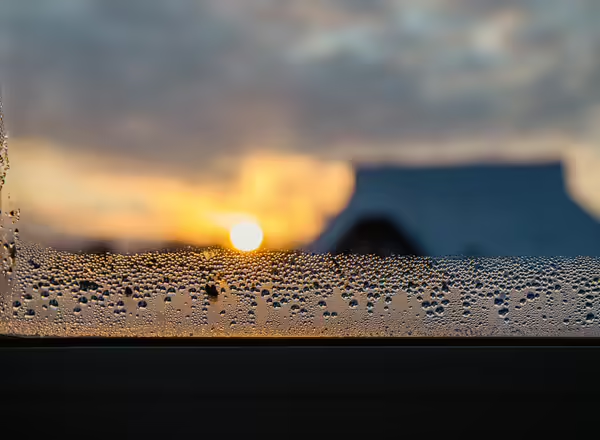
Most foliage plants prefer day temperatures between 65 degrees and 75 degrees with night temperatures usually 5 to 10 degrees lower. Avoid extreme temperature changes, such as cold and hot air blasts from windows, radiators, heating and air conditioning vents. Take special care near cold window panes too. Cold glass can damage foliage.

During the winter, most homes have less than 30 percent humidity and some houseplants may suffer. Humidity can be increased with a humidifier. Setting plants on pebbles in a water-filled tray increase humidity too. Make sure the pots are not sitting directly in water. Another technique is to group plants together which improves the humidity immediately surrounding them.
Misting plants does not always work well. The humidity level is affected for only a short time and repeated misting is necessary. While some plants tolerate misting, other plants do not. With too much misting, the incidence of disease may increase.

Take care not to over-fertilize your plants. Plants should be fertilized only when they are actively growing.
Most houseplants will not need to be fertilized more than once every 1 – 3 months, between March and September. During the short days of winter, plants experience a rest period and usually need very little or no additional fertilizer. This schedule is sufficient to maintain their health.
If you fertilize more frequently, the plants may outgrow their pots and space too soon. Also, plants may be damaged with too much fertilizer, especially when their growth rate is slowed in dim light. Too much fertilizer can burn roots.
Which Fertilizer?
We recommend a commercially available fertilizer. Specially labeled fertilizers for houseplants work well. A good ratio to choose is a 1:2:1, such as 5-10-5 or 10-20-10. Also a balanced ratio is good, such as 10-10-10. Follow the directions on the label. Never use a stronger mixture than what is recommended.
Fertilizers may be liquid, powder or tablet. Also, slow-release forms can be mixed into the potting soil at planting time or applied to the surface. Most last 3-4 months
To help avoid a salt buildup in the soil, leach the pot every 4-6 months. Pour a large volume of plain water into the pot and allow it to drain through completely. Empty the saucer.
Vacation Care
Making sure your plants receive enough water during your absence is the challenge. Cover the plants using a clear plastic bag that is large enough to accommodate each of them. Then place the enclosed plant in a shallow pan with pebbles and some water. This set-up should be sufficient for 7-8 days. For an extended vacation, ask someone to check on them regularly.
Summer Care
Many people move their houseplants outdoors during the warm summer months. Often this helps reinvigorate them. Do not place them in direct sun. A north-side exposure or under a tree works well. It is best to introduce plants to a new location slowly. Begin this acclimatization by placing outdoors for just a few hours on the first day. Each day, increase the time. By the end of 1-2 weeks, these plants should be ready for their new spot.
In the fall, bring them back into the house before the temperature drops. Repeat the acclimatization steps. Inspect them for insects and disease. Often it is a good idea to re-pot them into fresh potting mix before returning them indoors. Be aware that plants may be infected with disease or insects when moved indoors. Quarantine them from other indoor plants for 2-3 weeks to minimize this risk.
Cleaning Houseplants
Keep houseplants clean by carefully washing foliage. Washing leaves with water or cleaning with leaf polish is not recommended on plants with pubescent (hairy) leaves.
Plain, room temperature water or a soft, damp cloth works well. Leaf polish products should be used sparingly and only on plants with firm foliage.